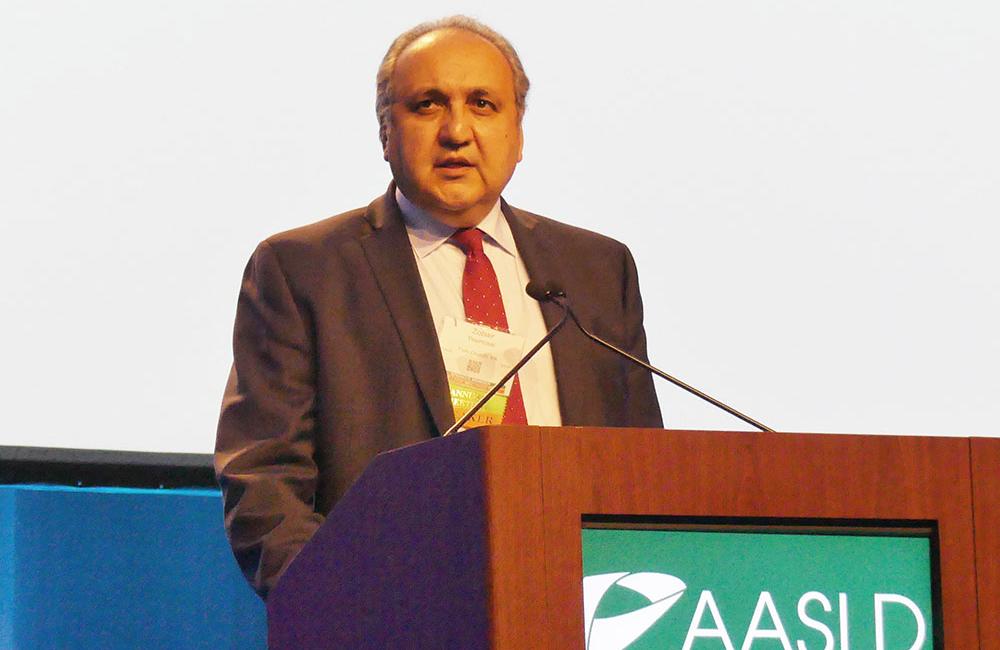
People who were cured of hepatitis C with direct-acting antivirals (DAAs) had sustained improvements in their health-related quality of life, including both physical and mental health measures, according to study results presented at the 2017 AASLD Liver Meeting this week in Washington, DC.
These findings have important policy implications, showing that "treatment is not only about clinical benefit but also about the patient experience," said presenter Zobair Younossi of Inova Fairfax Hospital in Virginia.
The advent of DAAs used in interferon-free regimens has made treatment for chronic hepatitis C shorter, better tolerated and much more effective. The latest DAAs can cure more than 90% of people with all hepatitis C virus (HCV) genotypes, usually in 8 or 12 weeks.
Clinical trials typically focus on evaluating the safety and efficacy of new therapies. Sustained virological response, or undetectable HCV viral load at 12 weeks post-treatment (SVR12), is considered a cure. But these trials are too short to assess long-term improvements in health outcomes and quality of life, which was the aim of Younossi's study.
This analysis looked at people with chronic hepatitis C who achieved SVR using a sofosbuvir-based DAA regimen in trials sponsored by Gilead Sciences, and who were entered into a long-term follow-up registry that plans to follow study participants for 5 years.
Health-related quality of life was evaluated at baseline (pre-treatment) and every 24 weeks for up to 144 weeks using Short Form-36 (SF-36). This standard measure includes eight domains: physical functioning, physical role, bodily pain, general health, vitality, social functioning, emotional role and mental health. These are combined into physical and mental summary scores.
The analysis included 3486 clinical trial participants. Just over 60% were men and the mean age was 53 years. The genotype distribution was 65% genotype 1, 10% genotype 2, 18% genotype 3 and 4% genotype 4. Liver cirrhosis was present in 16% and 12% had HIV/HCV co-infection. A quarter reported depression and 16% reported anxiety at baseline.
Compared to their health-related quality of life before starting treatment, participants saw significant improvements in all SF-36 domains. Younossi noted that the 4- to 8-point increases in scores across the various domains were not only statistically significant but also clinically relevant. The largest gains were seen in the vitality and general health domains. Increased health-related quality of life was maintained through 3 years of follow-up.
SF-36 physical and mental summary scores began rising at the end of treatment and continued to increase after achieving SVR until they reached a plateau at around the normal levels for an age-matched general population.
Cirrhosis, depression, anxiety and fatigue were independent predictors of lower health-related quality of life scores in a multivariate analysis. However, after adjusting for baseline levels, people with cirrhosis, depression, fatigue, insomnia and type 2 diabetes saw larger gains, suggesting that people with co-morbidities may experience the largest improvements after achieving SVR, Younossi said.
Based on these findings, the researchers concluded, "These data support the comprehensive and sustainable benefit of HCV cure."
Younossi Z et al. Significant and Sustained Improvement of Health-Related Quality of Life (HRQL) Scores in Patients with Hepatitis C (HCV) and Sustained Virologic Response (SVR). The Liver Meeting, abstract 64, 2017.
